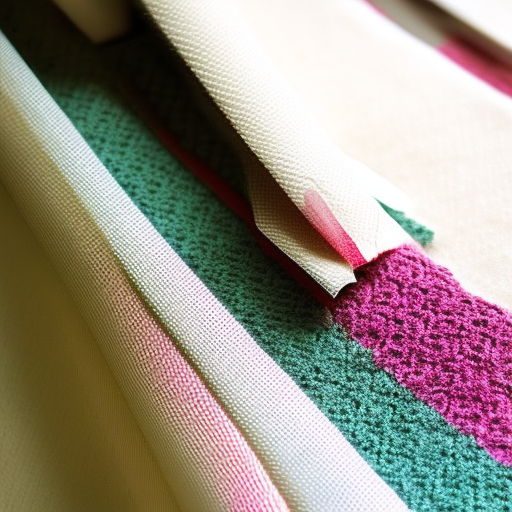Introduction
Sewing jersey knit fabric can be a bit challenging for beginners as it is a stretchy material. However, with the right techniques and tips, you can easily work with this versatile fabric. Here are some key tips to help you sew jersey knit fabric like a pro.
1. Choose the Right Needle and Thread
When sewing jersey knit fabric, it is essential to use a ballpoint or stretch needle to prevent skipped stitches or fabric snags. These specialized needles have rounded tips that slide between the fabric’s fibers. Additionally, use polyester or nylon threads for their stretchability and durability.
2. Use a Stretch Stitch
Regular straight stitches may cause the fabric to pucker or break when stretched. Opt for stretch stitches on your sewing machine, such as the zigzag or lightning bolt stitch. These stitches allow the fabric to stretch without snapping the seams.
3. Pre-Wash and Dry
Before you start sewing, it is essential to pre-wash and dry your jersey knit fabric. This process helps remove any shrinkage so that your finished garment retains its shape after washing. Follow the fabric’s washing instructions to avoid damaging it.
4. Use Pins or Clips
Hold the fabric pieces together with clips or ballpoint pins instead of regular pins. Jersey knit fabric can stretch and slip, which may result in misaligned seams if not secured properly. Pins with rounded tips or clips provide a better grip without leaving permanent holes in the fabric.
5. Test on Scrap Fabric
Before sewing your final project, it is advisable to test your stitches and settings on scrap fabric. This allows you to adjust the tension or stitch length if necessary, ensuring that you achieve the desired results without damaging your precious jersey knit fabric.
6. Use a Walking Foot
A walking foot, also known as an even feed foot, can be quite helpful when sewing jersey knit fabric. It evenly feeds the fabric from both the top and bottom layers, preventing stretching or shifting. This attachment is especially useful when working with thick knits or multiple layers.
7. Finish Seams Neatly
To give your jersey knit garment a professional finish, consider using techniques like serging, zigzag stitching, or using a twin needle to finish the raw edges. These methods prevent fraying and add durability to the seams.
8. Press with Caution
Jersey knit fabric is often heat-sensitive, so use a low heat setting on your iron or use a pressing cloth to protect the fabric. Avoid using excessive pressure or stretching the fabric while pressing to prevent distortion.
Conclusion
With these valuable tips, you are now equipped to tackle sewing projects with jersey knit fabric. Remember to choose the correct needle and stitch, pre-wash the fabric, secure with clips or pins, test on scrap fabric, and finish seams neatly. Taking care while pressing and handling the fabric will ensure a successful and professional-looking final product.




